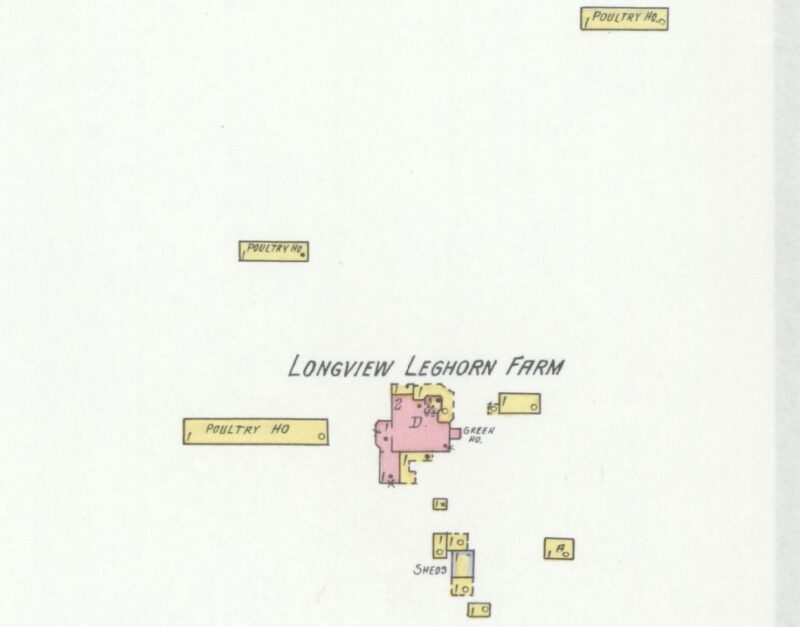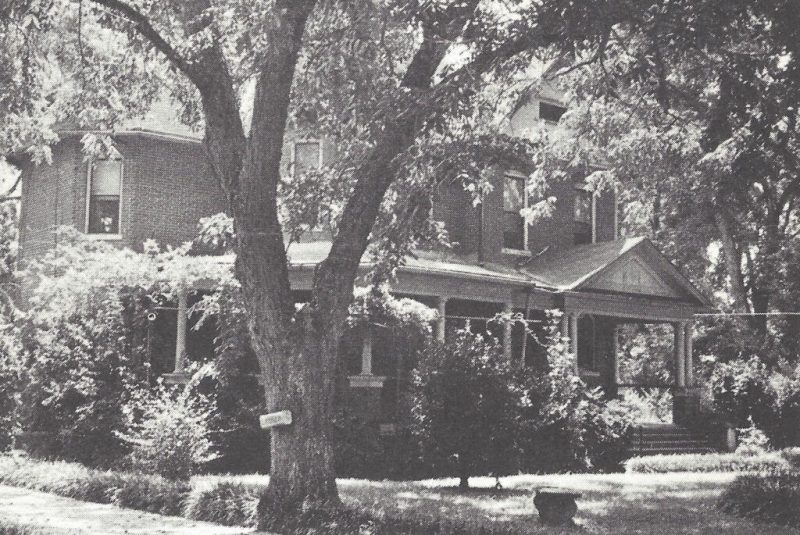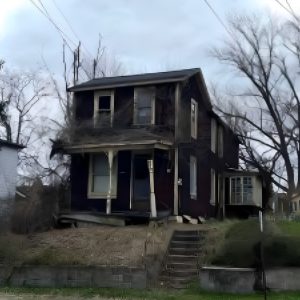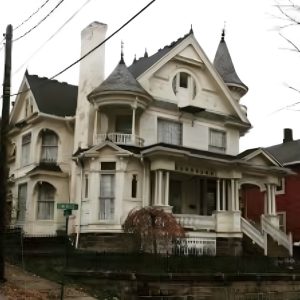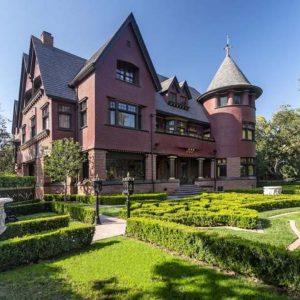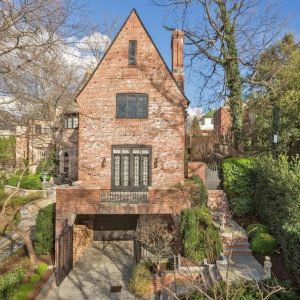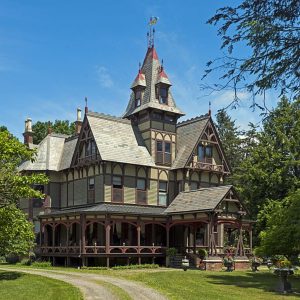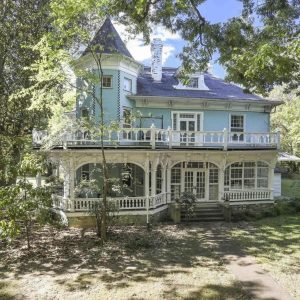Located high atop a bluff overlooking Lake Eufaula lays the ruins of the Moulthrop house and the Shorter family cemetery. The bluff was home to the early settlers of Eufaula in the 1830s and 1840s including the Shorters. General Reuben C. Shorter and his wife Mary Butler Gill Shorter settled on this property in 1837 which contained approximately 100 acres of land. General Shorter owned thousands of acres of cotton fields on both sides of the Chattahoochee River between Eufaula and Columbus, GA. This was not the Shorters’ plantation but it was their home.
The Shorters had thirteen children. Within four years of settling on the property, they had buried three of their children and their 23-year-old son-in-law in the cemetery. Seven of the Shorters’ children are buried here along with seven grandchildren, with the earliest burial occurring in 1839.
By the 1850s, many of the settlers on the bluff began moving towards what is now downtown Eufaula due to the discovery of water-borne diseases such as typhoid, diphtheria, and yellow fever was killing off many people who lived near the river. Despite this, the Shorters continued to live on the bluff.
After General Shorter’s death in 1853, the property was inherited by one of General Shorter’s sons, Eli Sims Shorter, Sr. who was a United States Congressman. His brother was Alabama Governor John Gill Shorter who is also buried at the family cemetery. After the death of Eli Sims Shorter, Sr. in 1879, the property was inherited by his son Eli Sims Shorter, Jr., and continued living there despite his wife’s persuasion to move into town.
When the family home on the bluff burned in 1884, the Shorter family moved downtown and built what is now known as the Shorter Mansion. After moving, Eli Sims Shorter, Jr. sold a portion of the property on the bluff to Alabama State Senator Robert H. Moulthrop, retaining ownership of the five acres where the family cemetery was located on.
Even after leaving the bluff, the Shorter family continued using the cemetery with the last family member being buried there being Governor Shorter’s daughter Mollie who died in 1922.
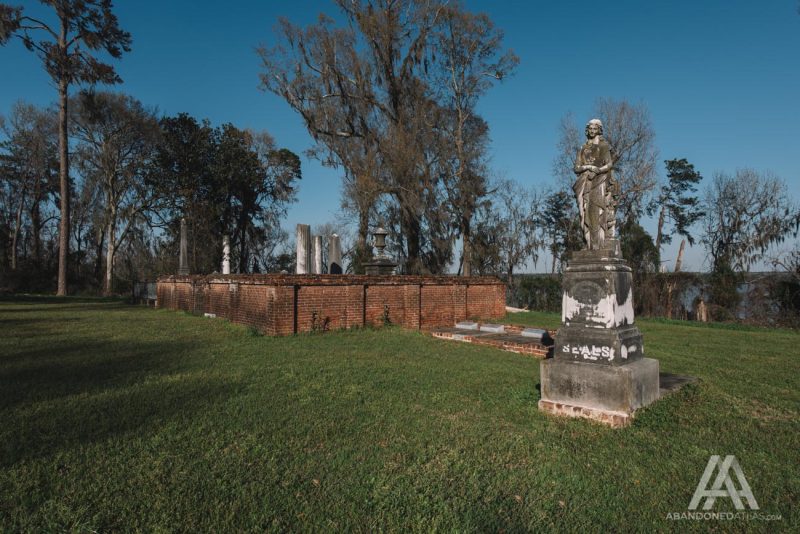
Robert Moulthrop
In 1862, Robert Moulthrop came to Alabama from Connecticut to supervise the laying of brick pillars of a new bridge for the Central Railroad of Georgia across the Chattahoochee River. He decided to settle down in Eufaula and established a brick manufacturing plant located just across the river in Georgetown, Georgia.
He was a prominent businessman and had been a director in the Commercial National Bank with interests in local cotton mills. Beginning in the 1970s, Moulthrop partnered with James Ross, a local carriage manufacturer, to build a number of brick storehouses along Broad Street such as the National Hotel (1879) at 218 Broad Street. He was a joint owner in the S. Stevens & Moulthrop Brick Company and a joint owner in the R. Moulthrop & Son Brick Company along with his son, Robert H. Moulthrop.
Robert Moulthrop Jr.
The younger Moulthrop was born on April 9, 1865, in a small cottage in Quitman County, Georgia, the same day that General Benjamin H. Grierson’s Union forces marched into Eufaula and occupied the city for the next few months. Between 1910 and 1914, he represented Barbour County in the Alabama Senate and introduced a bill for the removal of convicts in the state’s mines such as those owned by the Sloss Iron and Steel Company, the abolishment of the convict lease system, and the permitting of convicts to work on public highways and roads. 90-95% of convicts were African-American who lived and worked in horrendous conditions with many calling the system a new form of slavery. Although the bill passed the Senate with an overwhelming majority in favor of reform, it died in the House and it wouldn’t be until 1928 that convict leasing was abolished. Moulthrop served as an alderman of the city of Eufaula from 1894 to 1900. He was a member of the city board of education for many years. He was a Democrat and a member of the city’s executive committee, a member of the Protestant Episcopal Church, a Mason, and a Knight Templar.

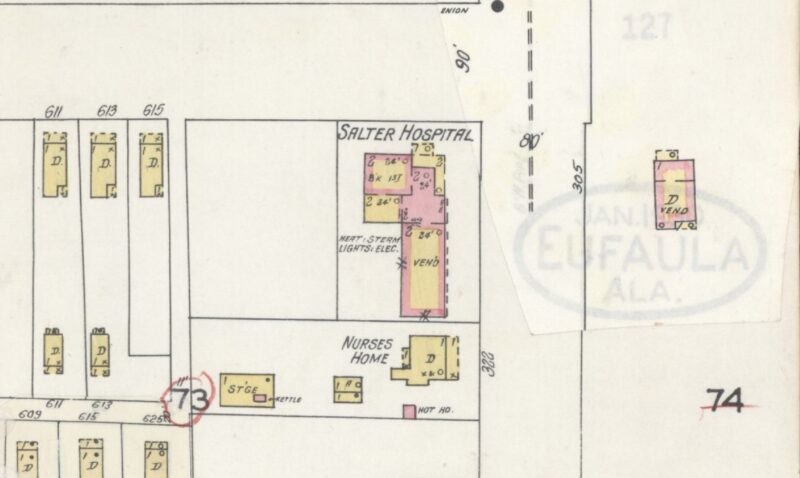

Moulthrop House
The first home the Moulthrops built was located on the corner of Riverside Drive and East Union Street with the family’s second home being built just adjacent to the first.
Both residences were later occupied by Salter Hospital which was established in 1923 by Dr. Paul Pullen Salter of Evergreen, Alabama. The Moulthrop family’s third home, the subject of this article, was built in 1899 at the far end of Riverside Drive on the former Shorter family property.
The Queen Anne-style house known as “Longview” was designed by John Adams from “the East and is built out of bricks made by the R. Moulthrop & Son Brick Company. Also on the property was the caretaker’s house, a gristmill, a storage house with two rooms, and a shed built to work on Ford Model T’s.
The Moulthrops owned the property until the 1980s when the last family member living on the property died. The home and Shorter Cemetery were added to the National Register of Historic Places as contributing structures of the Seth Lore and Irwinton Historic District on August 14, 1986.
The house and surrounding 25 acres, were sold to a real estate developer but any plans to develop the property never materialized, and the house fell into ruin. It wasn’t until June 2020 that the home and 25 acres surrounding it were finally purchased by an LLC with ties to the Moulthrop family.
The group plans to restore the house to its former glory with several plans for its use, including a venue for weddings or other events. The group plans to have the house restored by November 2021 for Thanksgiving dinner for members of the Moulthrop family.
